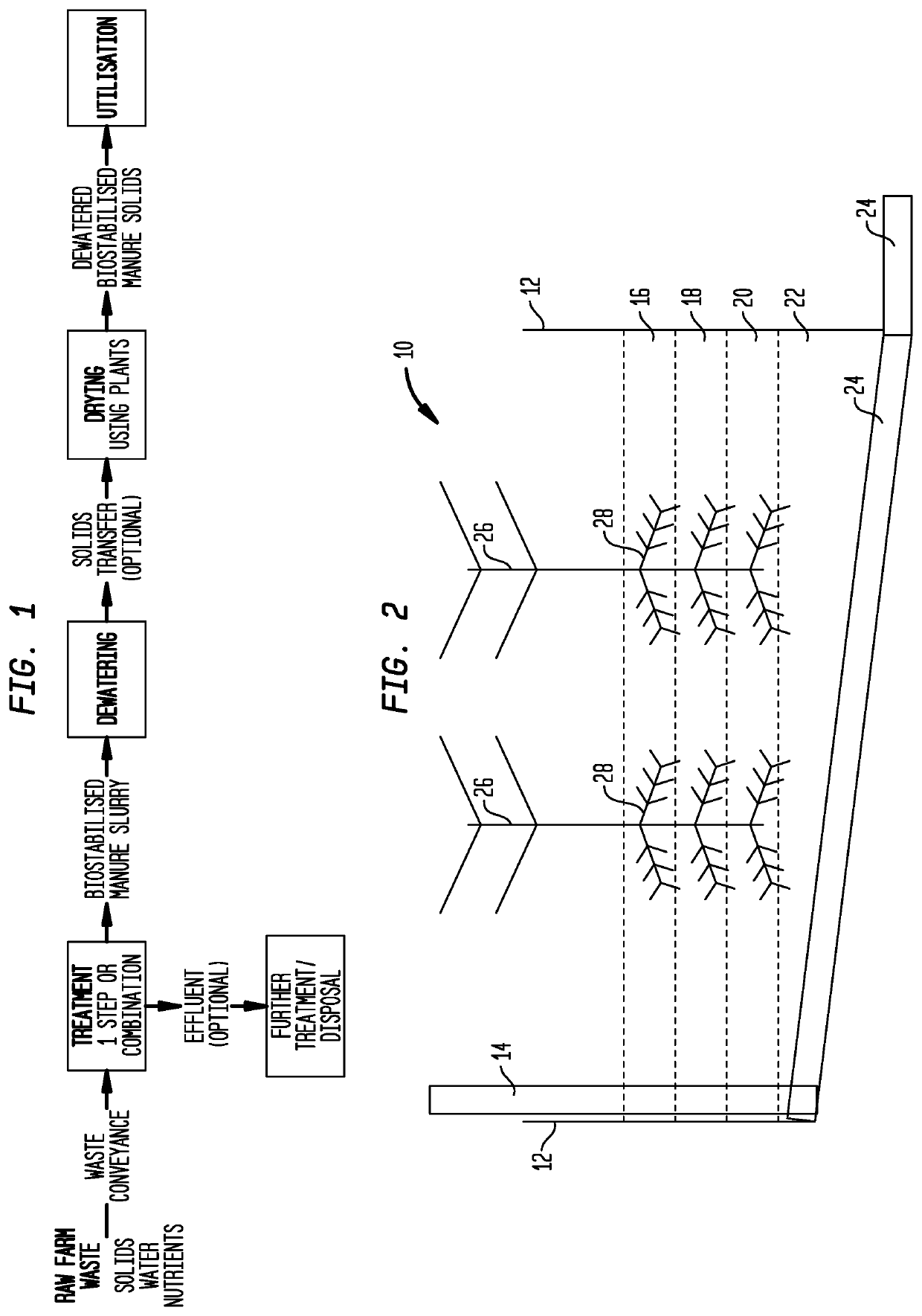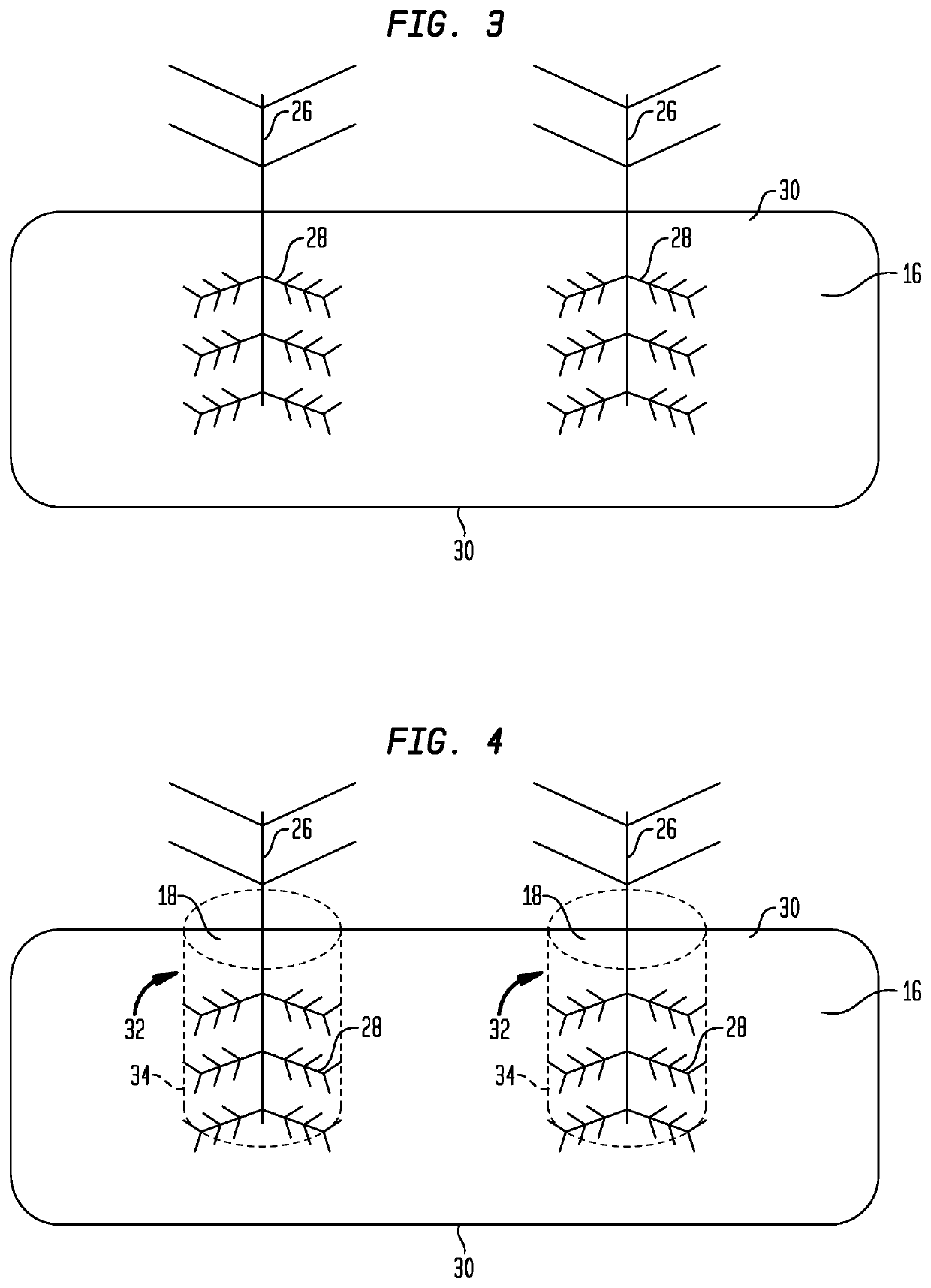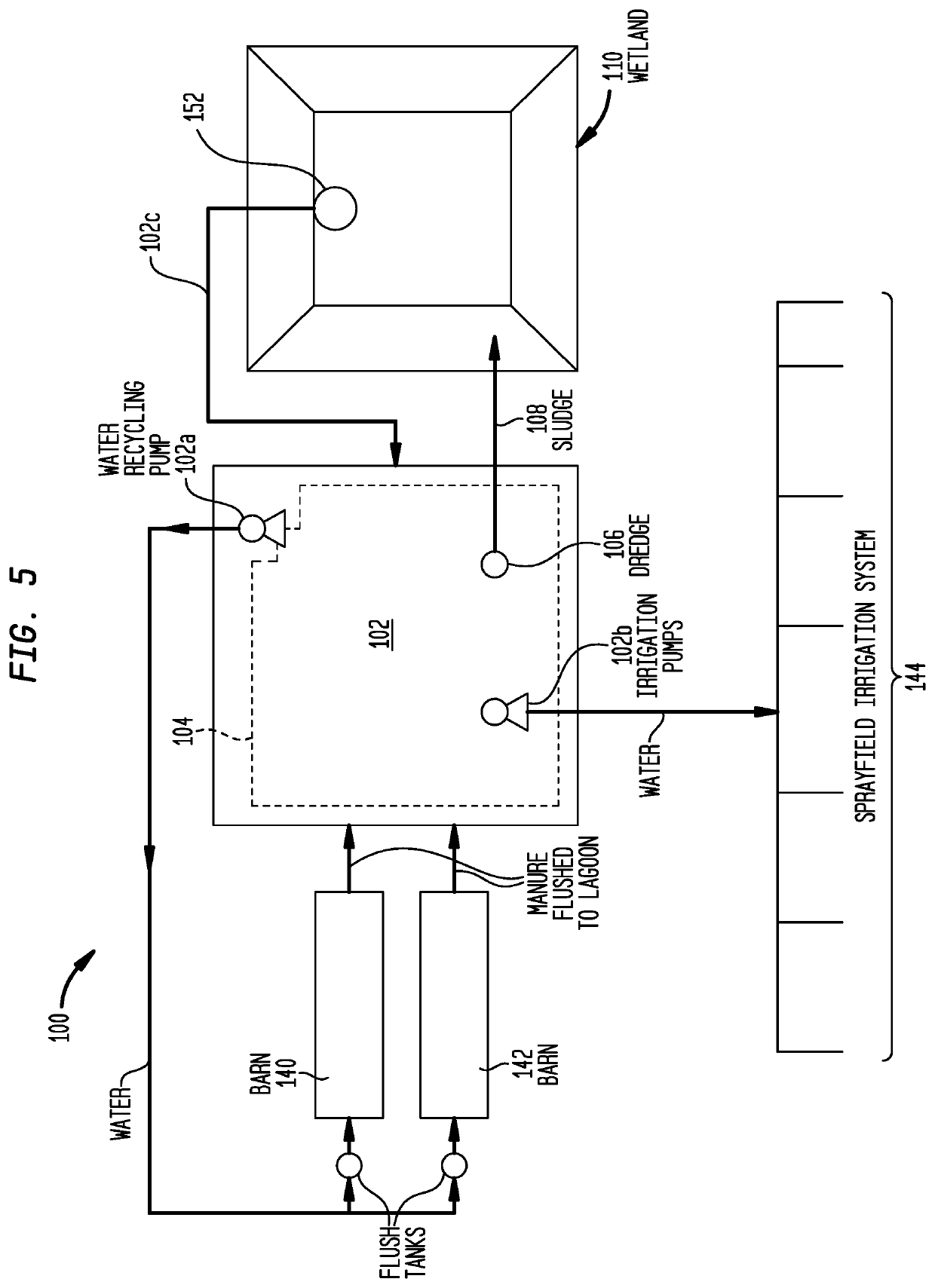Method to Improve the Dewatering of Farm Waste Sludges
a technology for farm waste and dewatering, applied in biological water/sewage treatment, sedimentation settling tanks, separation processes, etc., can solve the problems of not working, affecting the dewatering effect, and often expensive exercise,
- Summary
- Abstract
- Description
- Claims
- Application Information
AI Technical Summary
Benefits of technology
Problems solved by technology
Method used
Image
Examples
embodiment
[0110]Embodiment No. 3 is the method of processing raw farm waste No. 2, wherein the biostabilized manure slurry composition has an ammonia content of less than 500 ppm w / v.
[0111]Embodiment No. 4 is the method of processing raw farm waste according to Embodiment No. 3, wherein the biostabilized manure slurry composition has an ammonia content of less than 300 ppm w / v.
[0112]Embodiment No. 5 is the method of processing raw farm waste according to Embodiment No. 4, wherein the biostabilized manure slurry composition has an ammonia content of less than 100 ppm w / v.
[0113]Embodiment No. 6 is the method of processing raw farm waste according to any of the foregoing embodiments, wherein the biostabilized manure solids are dried to a moisture content of less than about 60% by weight.
[0114]Embodiment No. 7 is the method of processing raw farm waste according to Embodiment No. 6, wherein the biostabilized manure solids are dried to a moisture content of less than about 50% by weight.
[0115]Emb...
PUM
| Property | Measurement | Unit |
|---|---|---|
| pH | aaaaa | aaaaa |
| weight | aaaaa | aaaaa |
| time | aaaaa | aaaaa |
Abstract
Description
Claims
Application Information
 Login to View More
Login to View More - R&D
- Intellectual Property
- Life Sciences
- Materials
- Tech Scout
- Unparalleled Data Quality
- Higher Quality Content
- 60% Fewer Hallucinations
Browse by: Latest US Patents, China's latest patents, Technical Efficacy Thesaurus, Application Domain, Technology Topic, Popular Technical Reports.
© 2025 PatSnap. All rights reserved.Legal|Privacy policy|Modern Slavery Act Transparency Statement|Sitemap|About US| Contact US: help@patsnap.com



